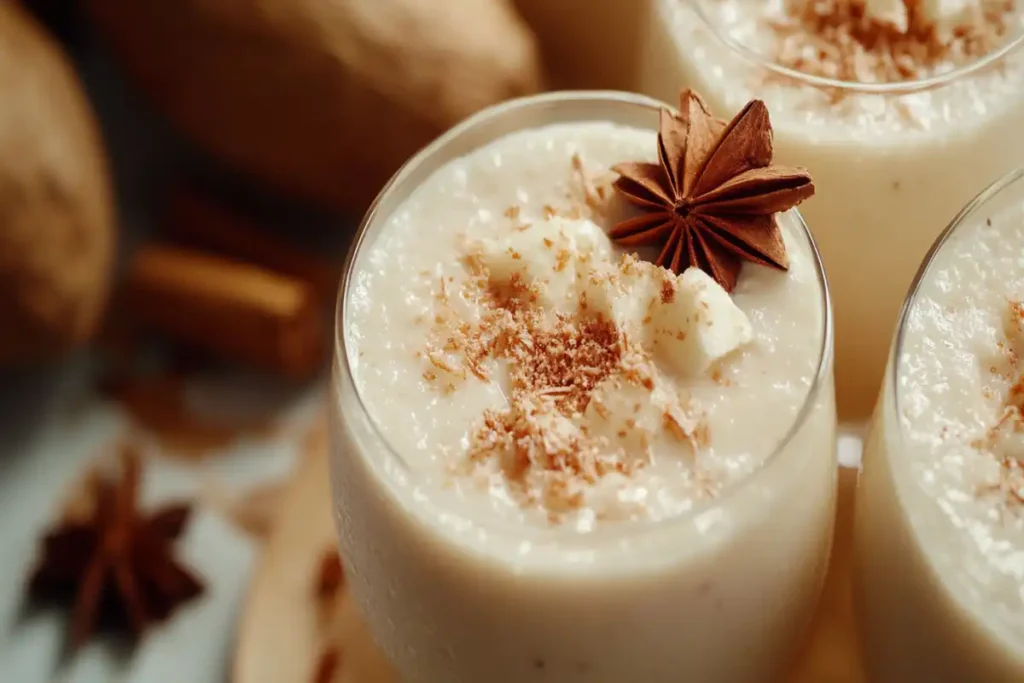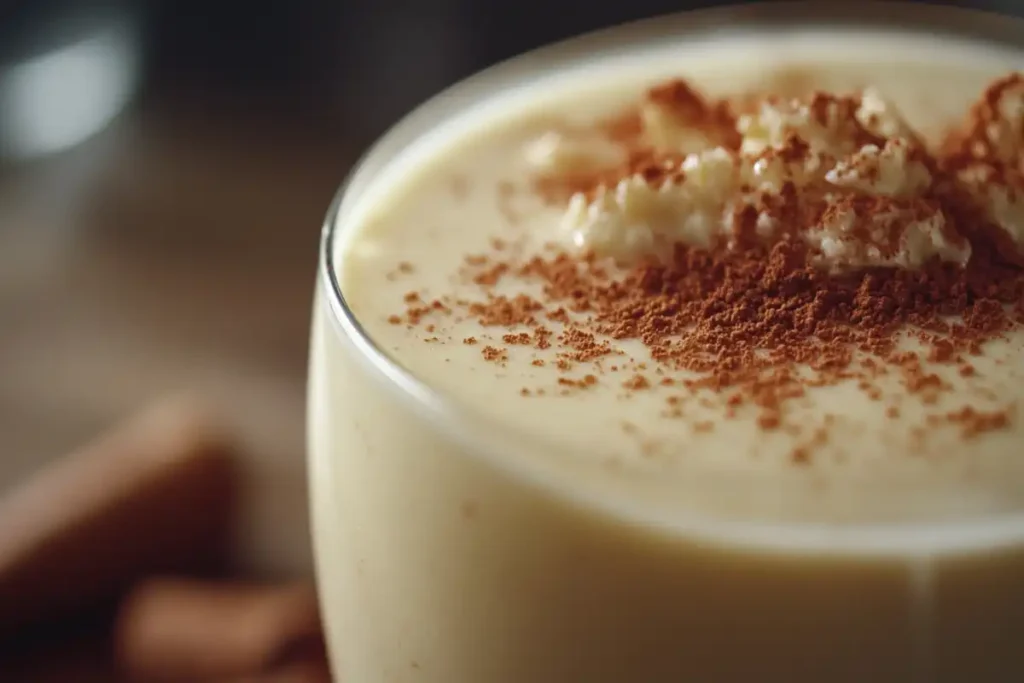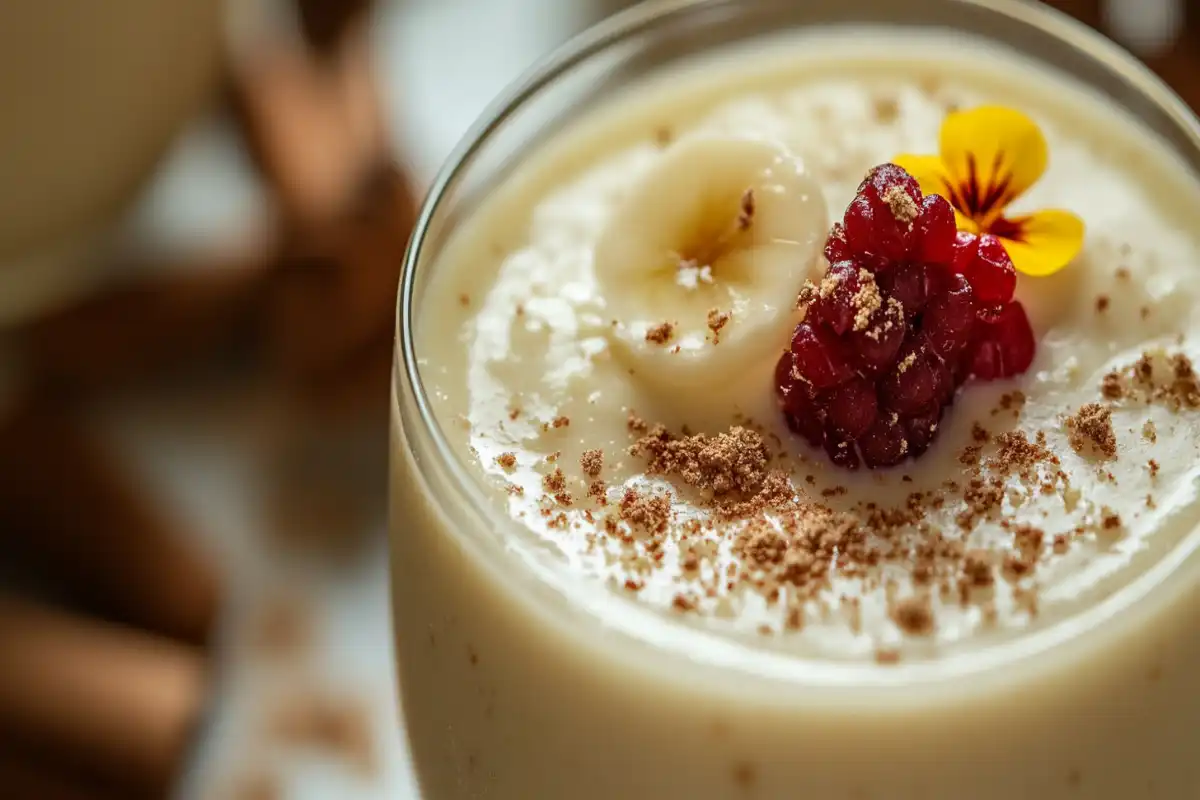When it comes to the holiday season in Puerto Rico, one drink stands out as a staple in every celebration: Coquito. This creamy, coconut-flavored beverage is the epitome of Puerto Rican culture, bringing warmth, sweetness, and joy to festive gatherings. But what exactly is Puerto Rican Coquito made of? This article will dive deep into the ingredients, the history, and the tradition surrounding this beloved drink, giving you a comprehensive understanding of what makes Coquito so special.
Introduction to Puerto Rican Coquito
Coquito, often referred to as the Puerto Rican version of eggnog, is a rich and creamy holiday drink made primarily from coconut milk, rum, and spices. The name “Coquito” translates to “little coconut” in Spanish, which is fitting given its main ingredient. This traditional beverage is a symbol of Christmas in Puerto Rico, similar to how eggnog is associated with the holiday season in the United States. However, Coquito stands out due to its unique blend of tropical flavors and spices, creating a distinct taste that reflects the island’s rich cultural heritage.
The Essential Ingredients of Puerto Rican Coquito
The magic of Coquito lies in its simple yet flavorful ingredients. Each component plays a crucial role in creating the beverage’s signature taste and texture. Let’s take a closer look at what makes up this iconic drink.
How Coconut Milk and Cream Define the Drink
Coconut is the star of the show in Coquito. The drink’s name itself highlights the importance of coconut in its composition. Traditionally, both coconut milk and coconut cream are used in the recipe. Coconut milk provides a lighter base, while coconut cream adds richness and thickness to the beverage. The combination of these two creates a smooth, velvety texture that is characteristic of Coquito.
Coconut milk is made by grating fresh coconut meat and soaking it in hot water before straining the mixture. Coconut cream, on the other hand, is thicker and richer, often extracted from the first press of grated coconut meat. While some recipes may use one or the other, most traditional Coquito recipes include both for a perfect balance of flavor and texture.
Sweetened Condensed Milk: Adding Creaminess and Sweetness
Another key ingredient in Coquito is sweetened condensed milk. This thick, syrupy milk adds both creaminess and sweetness to the drink, making it incredibly indulgent. Sweetened condensed milk is made by removing most of the water from cow’s milk and then adding sugar. The result is a rich, sweet liquid that enhances the coconut flavors while providing the drink with its signature silky consistency.

Evaporated Milk: Enhancing the Creamy Texture
Evaporated milk is often paired with sweetened condensed milk in Coquito recipes. While similar in some ways, evaporated milk is unsweetened and has a slightly caramelized flavor due to the cooking process used to remove about 60% of its water content. This ingredient adds depth to the drink, balancing the sweetness of the condensed milk while contributing to the overall creaminess.
Puerto Rican Rum:
No Coquito recipe would be complete without the addition of rum, which is an essential element in giving the drink its distinctive kick. Puerto Rican rum, particularly white rum, is traditionally used in Coquito. Rum production has a long history in Puerto Rico, with the island being one of the leading rum producers in the world. The inclusion of rum in Coquito not only adds warmth but also helps to preserve the drink, allowing it to be stored for extended periods.
While some prefer a stronger rum presence, others opt for a more subtle hint, adjusting the amount based on personal taste. The rum not only enhances the flavor but also gives the drink its festive spirit, making it the perfect beverage for holiday celebrations.
Spices:
Spices are what set Coquito apart from other holiday drinks like eggnog. The most common spices used in Coquito are cinnamon, nutmeg, and cloves. These spices infuse the drink with warm, aromatic notes that complement the creamy coconut and sweetened milk. In some recipes, vanilla extract is also added to enhance the flavor profile.
Cinnamon is often added in the form of ground cinnamon or cinnamon sticks, which are sometimes used to garnish the drink. Nutmeg, with its slightly sweet and nutty flavor, is another essential spice that adds depth to the Coquito. Cloves, though used sparingly, provide a hint of warmth and a subtly sharp note, rounding out the drink’s overall flavor.
Vanilla and Other Flavorings
Vanilla extract is a common addition to Coquito, adding a layer of sweetness and complexity to the drink. Some variations of the recipe may also include almond extract, star anise, or even a dash of ground ginger, depending on regional preferences and family traditions. These flavorings add a personal touch to the beverage, making each Coquito unique.
How to Make Puerto Rican Coquito: A Step-by-Step Guide
Now that we’ve explored the essential ingredients, let’s dive into how to make traditional Puerto Rican Coquito. The process is straightforward and requires minimal cooking, making it an easy recipe to prepare for your holiday gatherings.
Ingredients:
- 1 can (14 oz) of coconut milk
- 1 can (15 oz) of coconut cream
- 1 can (14 oz) of sweetened condensed milk
- 1 can (12 oz) of evaporated milk
- 1 to 2 cups of white Puerto Rican rum (adjust to taste)
- 1 teaspoon of ground cinnamon
- 1 teaspoon of ground nutmeg
- 1 teaspoon of vanilla extract
- Cinnamon sticks for garnish (optional)
Instructions:
- Combine the Ingredients: In a large blender, combine the coconut milk, coconut cream, sweetened condensed milk, and evaporated milk. Blend until smooth and well combined.
- Add the Spices and Rum: Add the ground cinnamon, nutmeg, vanilla extract, and rum to the blender. Blend again until all the ingredients are fully incorporated. Taste the mixture and adjust the rum or spices to your liking.
- Chill the Coquito: Once the mixture is well blended, pour it into glass bottles or jars. Seal the containers and refrigerate the Coquito for at least 4 hours, or overnight if possible. This chilling process allows the flavors to meld together, creating a richer taste.
- Serve: Before serving, shake the bottle well to ensure the mixture is fully blended. Serve the Coquito cold in small glasses, garnished with a cinnamon stick or a sprinkle of ground cinnamon if desired.
Variations of Puerto Rican Coquito
While the traditional Coquito recipe is beloved for its simplicity and rich flavor, there are several variations that families across Puerto Rico and beyond have created over the years. These variations add a unique twist to the classic recipe, allowing for customization based on personal preferences and dietary needs.
Coquito with Eggs (Coquito con Huevo)
Some variations of Coquito include eggs, similar to eggnog. The addition of egg yolks gives the drink a thicker, richer consistency. To make this version, egg yolks are typically beaten and cooked with the evaporated milk until the mixture thickens slightly. Once cooled, it’s blended with the other ingredients. This version is often referred to as “Coquito con Huevo” and is a nod to the traditional eggnog that inspired the drink.
Vegan Coquito
For those who follow a vegan diet or are lactose intolerant, vegan Coquito is a delicious alternative. In this variation, dairy-free options like almond milk, oat milk, or cashew milk replace the evaporated and condensed milk. Sweetened condensed coconut milk can also be used to maintain the drink’s traditional sweetness and thickness. The result is a plant-based version of Coquito that is just as creamy and flavorful as the original.
Chocolate Coquito
For chocolate lovers, adding cocoa powder or melted chocolate to the Coquito mixture creates a decadent twist on the classic recipe. This variation, known as Chocolate Coquito, incorporates the rich flavors of chocolate with the creamy coconut base, resulting in a drink that’s perfect for satisfying any sweet tooth during the holidays.
Coquito without Alcohol
While rum is a traditional component of Coquito, it’s possible to make a non-alcoholic version that’s just as enjoyable. Simply omit the rum and replace it with coconut water or additional coconut milk for a kid-friendly version of the drink. This variation allows everyone to enjoy the festive flavors of Coquito without the alcohol content.
The Cultural Significance of Coquito
Coquito is more than just a holiday beverage; it’s a symbol of Puerto Rican culture and tradition. The drink is often made in large batches and shared with family and friends during Christmas and New Year’s celebrations. Many families have their own Coquito recipes, passed down through generations, each adding a unique twist to the classic formula.
In Puerto Rico, the act of making Coquito is often a communal experience, with families gathering to prepare the drink together. It’s a time for bonding, sharing stories, and celebrating the joy of the holiday season. The drink itself represents the warmth and hospitality that Puerto Rican culture is known for, making it a cherished part of the island’s festive traditions.

FAQs About Puerto Rican Coquito
What is the best rum to use for Coquito?
Puerto Rican white rum is the traditional choice for making Coquito. Brands like Bacardí or Don Q are popular options, but any high-quality white rum will work. The amount of rum can be adjusted based on personal preference.
How long does Coquito last?
Coquito can last for several weeks when stored in a sealed container in the refrigerator. The alcohol content helps to preserve the drink, but it’s always a good idea to shake the bottle before serving as the ingredients may separate over time.
Can I make Coquito without alcohol?
Yes, Coquito can be made without alcohol by simply omitting the rum. For added flavor, you can replace the rum with coconut water or extra coconut milk.
Is Coquito the same as eggnog?
While Coquito is often compared to eggnog, they are different drinks. Eggnog is made with eggs, milk, cream, sugar, and spices, while Coquito is coconut-based and does not traditionally include eggs.
Can I add other flavors to Coquito?
Absolutely! Many people experiment with different flavors in their Coquito, such as chocolate, coffee, or even pumpkin spice. The recipe is versatile and can be customized to suit your tastes.
Why is my Coquito separating?
Separation in Coquito is normal due to the coconut milk and cream. Simply shake the bottle well before serving to recombine the ingredients.
Conclusion:
Puerto Rican Coquito is more than just a drink; it’s a celebration of culture, tradition, and the holiday spirit. Whether you stick to the classic recipe or try one of the many variations, making Coquito is a joyful experience that brings people together. The rich, creamy flavors of coconut, rum, and spices create a beverage that’s perfect for toasting to the season with loved ones. As you enjoy your Coquito this holiday season, you’re not just sipping on a delicious drink—you’re partaking in a cherished Puerto Rican tradition that has been passed down through generations. Salud!
